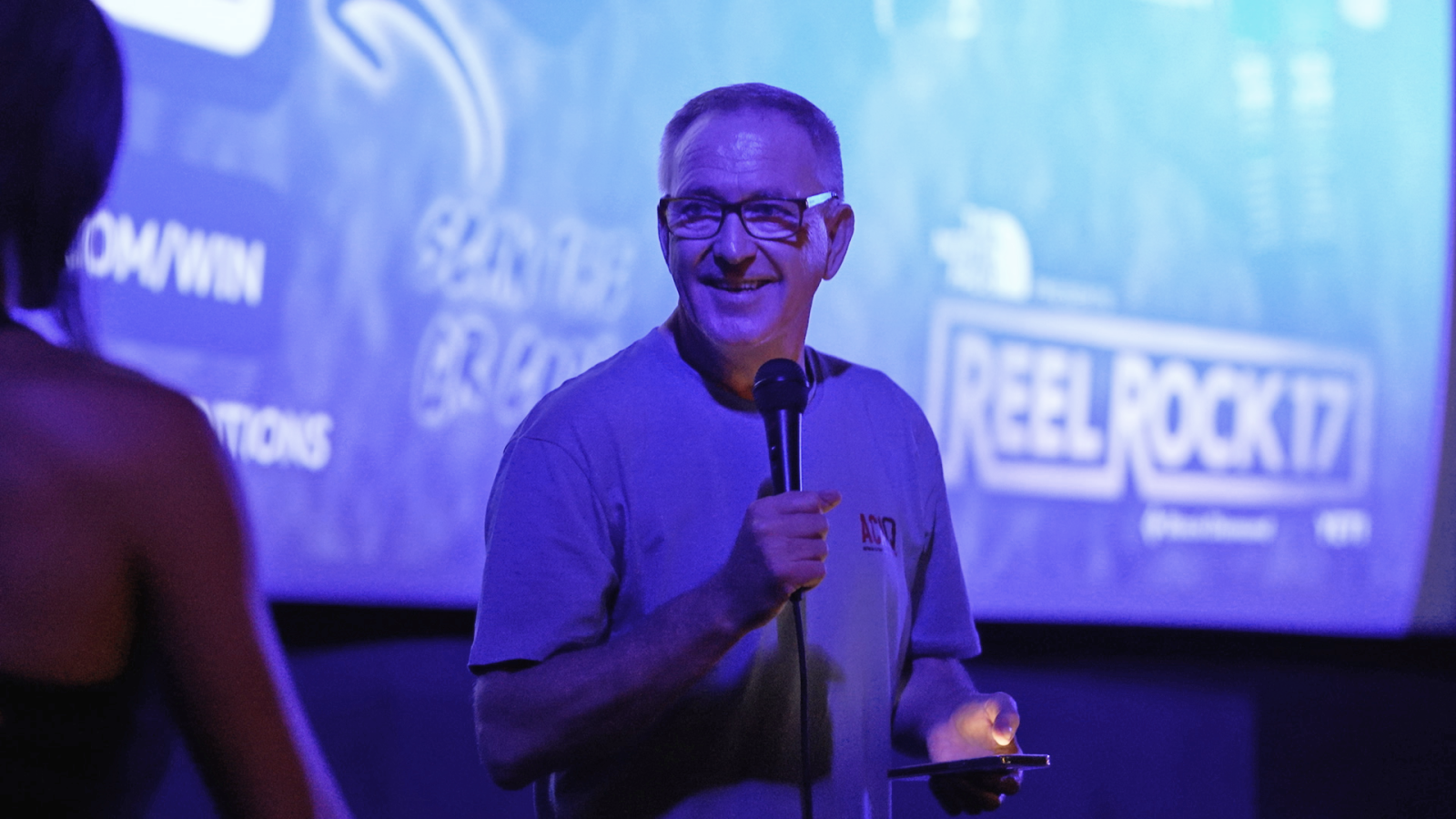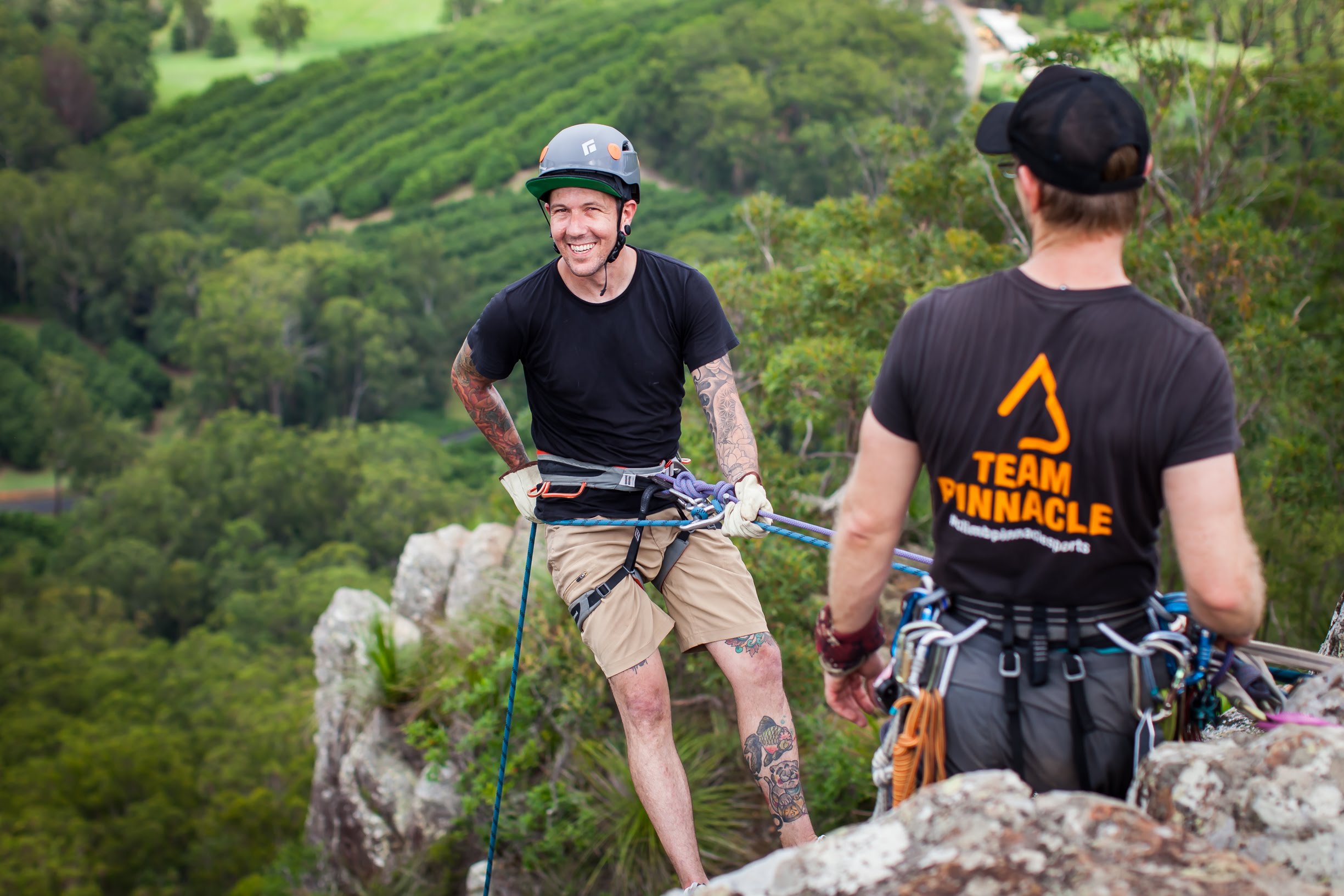A Q&A with ACAQ President, Peter Martland

A question that is brought up quite often amongst the new generation of climbers in our community. It is a fair question to ask if you have not climbed outdoors. However, if you have been enjoying climbing on the beautiful cliffs of Queensland, you have to know that access to those crags has involved the work of the Australian Climbing Association of Queensland.
You may not be aware that the act of bolting climbing routes requires permission on private land, state forest and national parks. ACAQ liaises with government and non-government land managers to provide access to cliffs to allow for the growth of recreational sports like rock climbing. The process of seeking permission and legitimising local crags is what maintains climbing as a nationally recognised sport just like mountain biking, trail running etc.
Keep in mind that providing access is not to be confused with bolting or establishing routes on cliff faces.
We sat down with Peter Martland, the president of ACAQ to get answers to simple questions that would broaden the knowledge of the part that ACAQ plays in climbing in Queensland.
Q1. What does ACAQ do?
Peter: “The Australian Climbing Association of Queensland is an incorporated association that is the peak representative body of rock climbing in Queensland. We are recognised by government agencies as the consultative entity for anything that involves rock climbing. We are expanding our scope into other areas such as Crag Care and community relations..”
Q2. Who is involved in maintaining crags?
Peter:
Maintaining crags is done by volunteers. We are expanding our role to identify areas that need work, liaise with the land manager, and organise the activity. The maintenance of bolts is undertaken by a small group of experts who have lots of experience with the technical aspects of this work. New volunteers approach us who are interested in learning the techniques and we play the role of introducing them to the right people.”
Q3. There are a lot of not-for-profit organisations out there, why should we support ACAQ?
Peter: “People generally support a not-for-profit because they are interested in what these organisations are built for. If you are interested in outdoor climbing, it’s probably in your interest to support us in our work.”
Q4. How can I help out?
Peter: “There are many ways; our organisation is entirely run by volunteers so the more the better. We are always looking for a broad range of expertise. For example, people who are skilled in the natural sciences can review ecological documents produced by government agencies to verify their accuracy. We are interested in a range of skills, from IT, Law, content creation, media, film, etc, so if you do possess any skills, please come and ask us. It may only be on one small project for a year or you may be held in reserve until we need you for a particular task.
Primarily, we are looking for a lot more members. I’ve had a couple of meetings with state politicians and they ask (almost immediately) “How many members do you have?”. The bigger the numbers, the more they are interested.“
Q5. How many paying members does ACAQ have?
Peter:“We have 180 financial members and a total of 600 if you include our affiliate clubs UQ Mountain Club (UQMC), QUT Cliffhangers and The Brisbane Rock Climbing Club (BRC). So the numbers are small and when you compare it to an estimated total population of over 45,000 climbers in Queensland, the percentages are extremely low."
Q6. What are the fees for ACAQ membership? ?
Peter. “$20 per year or $0.40 per week.”
Q7. How many more paying members do you need to sign up to hit the goal for this year?
Peter: “Our goal is having a base of members to demonstrate the backing we have from our community. We can take that to the government and say “hey look, we have a fair chunk of your electorate that are interested in rock climbing. We have 3,300 followers on our social media compared to 180 financial members. It would be great to match those figures.
It’s not so much about the money that membership gives to ACAQ, it’s about getting traction with legislators.”
Q8. Does ACAQ bolt cliffs?
Peter: “No we do not, there may be some misinterpretation about our role. We maintain a bolt register which is useful because it ensures land managers that we are keeping track of the hardware on their cliffs.”
Q9. When we come across any faulty anchors, how do we bring them to your attention?
Peter: “There are a couple of ways, for Kangaroo Point, you could report them directly to us by scanning the QR codes on the light boxes at Kangaroo Point or directly access the KP Bad Bolts notification.
For other sites, approach us to update the bolt register and add your feedback to the database, or post on the relevant social media site for a particular area (e.g. S.E. Queensland Rock Climbing Group. The ACAQ register doesn’t cover all crags, just the popular ones. We would love to expand that but it does come down to having enough volunteers who understand the database and are willing to commit their personal time to the maintenance of the register.”
Q10. We are losing your cliff access, how can we work together to keep our access to these crags consistent?
Peter: “Working together, memberships and volunteers is the simple answer. The other thing is to not go rapidly into a new area. We really need to consult all stakeholders before we go charging into the development of new cliffs.
Keeping access open is another interesting topic. From an ACAQ perspective, there needs to be a little more formality in the system, there are a few aspects to this. One is having formal relationships with agencies such as the Queensland Parks & Wildlife Service (QPWS). We are starting on the path of having the South East Queensland Regional Working group - a forum of senior rangers and ACAQ. It’s intended that we work with QPWS to negotiate access to new areas, to formalise arrangements in existing areas, to organise environmental repatriation, and to develop climbing management plans on their land. ..”
Q11. Has ACAQ ever considered other ways to boost memberships like hosting public events?
Peter: “We are starting on that path, we have started a merchandising stream to get our name out there. We have really good corporate sponsors that do a lot of fundraising that helps get our name out there and we’d like to expand on that. Running events are not on the scene for us at the moment. Things like hosting Reel Rock, require a lot of work that we just don’t have the manpower in our volunteer pool to accommodate. However, having our brand present at the recent Reel Rock 17 event was very helpful. We are also looking at events like bake sales at popular venues like Urban Climb and having our profile up at big events like Boulderfest. Having ACAQ be a key focus at climbing gyms and doing interviews like this one, and having the opportunity to speak to members of the community really helps. I think there is a lack of understanding about what we do. We definitely need to have more of a strategy and a vision that people understand, enabling them to embrace our mission.”
Q12. What are the current challenges that ACAQ is facing?
Peter: “Our biggest challenge at the moment is legitimising sports climbing and bouldering. Traditional climbing has never been a real problem, however, fixed anchors on trad routes is a sleeper issue with QPWS. Fixed hardware is always the elephant in the room when I have meetings with them. The Nature Conservation Act is very clear in this regard. The legislation in other Acts is “interpreted” by land managers as “a permit is required”.. Given the growth in sport climbing, we need to come out of the shadows and work with government agencies and state legislators to find a path forward. Queensland will have the best climbers in the world here for the 2032 Olympics, and many of them will want to sample our rocks. We really need to find that middle ground that is palatable to the government, that effectively delivers the outcomes that government agencies are obliged to deliver, and that also accommodates growing interest in the sport.
This will be a legislative process that requires a political presence - an understanding of the issues, and a willingness to support the sport. We can only do this with the Queensland parliament and the departments that report to them.
I would like to see a package of bills before the Queensland parliament in the next 2 years. In parallel, we can work with QPWS to develop climbing management plans for key areas. Within those management plans, we’d look at things like making defined areas accessible for sport climbing or bouldering, giving our community the legitimacy to go ahead and develop a particular area for those activities. I think that is probably the most important thing we need to do right now.”
Q13. What are some of the notable accomplishments of 2022?
Peter: “2022 was a rebuilding year. We have a new service provider for our website, we have a new app, and we now have a membership card which assists our commercial partners with providing discounts. Additionally, we are rebuilding the brand with a new look, a new logo, a focus on a proactive approach. We want to avoid situations where we are forced to be reactive. In the past, we would see a problem and dive in and fix it but now I think we need to look to a new model of access that is sustainable, consultative, and enshrined in legislation. We are starting to develop that kind of trajectory.”
Q14. What are your goals for 2023?
Peter: “More members is one of the big things, for the reasons I mentioned earlier. Secondly, to streamline our systems so that there is less workload placed on our volunteer workforce. Also to build a good base of volunteers. Additionally, we want to get as far down the track to build a legislative package so we could get that into the parliament, I believe that’s very important.“
Q15. Could you explain what happened with the Minto Crag?
Peter: “Well, Minto (Whinpullen), just recently has been granted to the Danggan Balun (Five Rivers) Aboriginal corporation. The land is classified as inalienable freehold and can’t be sold, bought, traded or used as an asset for any means. So if anyone really wants to climb at Whinpullen, you have to ask them."
Looking for more great reads? Subscribe to our newsletter to stay up to date with the latest climbing tech, crag recommendations and upcoming events.







